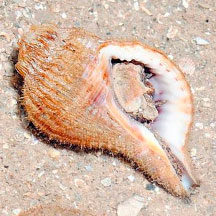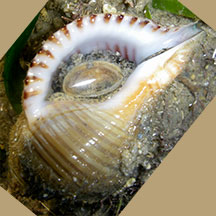 |
|
| shelled snails text index | photo index |
| Phylum Mollusca > Class Gastropoda > Family Ranellidae |
| Leopard
triton snail Cymatium sp.* Family Ranellidae updated Sep 2020 Where seen? This snail with a leopard spotted body is sometimes seen among seagrasses on some of our shores. Features: 3-4cm. Shell thick, oval with curvy pointed tip. Shell covered with a hairy 'skin' that covers the fine rings on the shell. Shell opening wide with a scalloped inner edge. It has a short siphonal canal. Operculum small, beige. Body pale with dark spots so it resembles a leopard. What does it eat? According to Gosliner, Cymatium species may feed on a variety of gastropods as well as bivalves. |
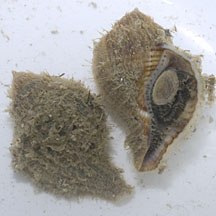 Changi, May 12 |
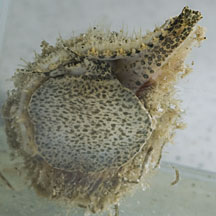 Changi, May 12 |
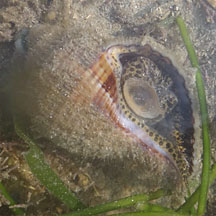 Cyrene Reef, Jun 12 |
*Species are difficult to positively identify without close examination.
On this website, they are grouped by external features for convenience of display.
| Leopard triton snails on Singapore shores |
On wildsingapore
flickr
|
| Other sightings on Singapore shores |
Changi, Jul 12 |
|
References
|
